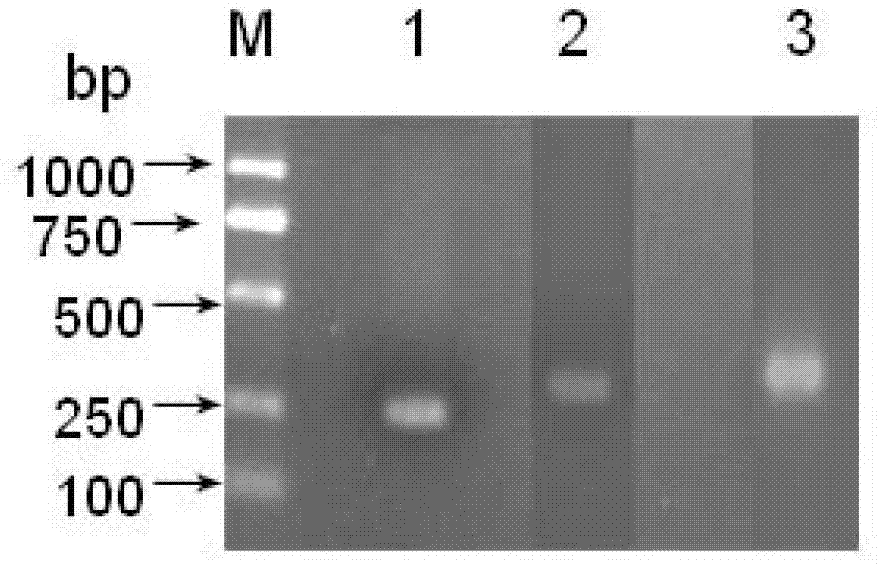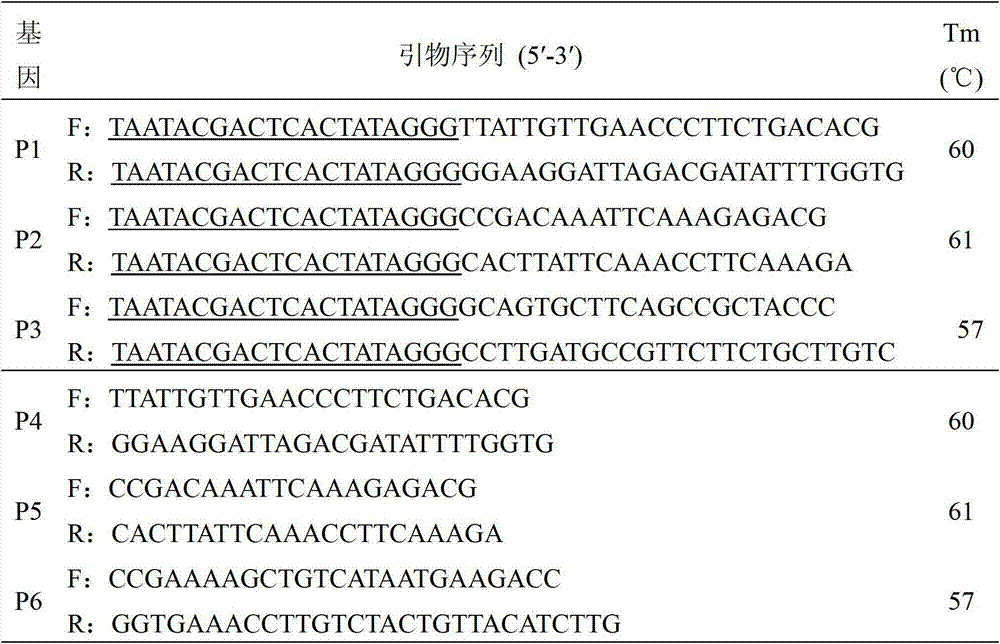Application of two dsRNAs (double-stranded ribonucleic acids) and combination thereof in controlling aphid damage
An aphid and DNA molecule technology, applied in DNA/RNA fragments, applications, recombinant DNA technology, etc., can solve the problems of unclear resistance mechanism, ineffective conventional breeding, and lack of aphid-resistant germplasm resources in wheat
- Summary
- Abstract
- Description
- Claims
- Application Information
AI Technical Summary
Problems solved by technology
Method used
Image
Examples
Embodiment 1
[0048] Example 1. Acquisition of 23028dsRNA and coo2dsRNA related genes of Aphid aphidis
[0049] 1. Extraction of total RNA and synthesis of cDNA
[0050] About 20 tube aphids were taken respectively, and total RNA was extracted according to the instructions of the Trizol kit of Beijing Quanshijin Company, purified with RNA Cleaning Kit, and the first strand of cDNA was synthesized by reverse transcription. The operation steps refer to the instructions of the kit.
[0051] 2. Primer design and gene cloning
[0052] According to the results of the transcriptome sequencing of the plant aphid in our laboratory, the growth and development-related gene 23028 (sequence 1) and the sequence of coo2 (sequence 7), the salivary secretion protein of green peach aphid, were compared with DNAman5.0, and the conserved sequence was selected , using Primer Primer5.0 software to design primers P1 and P2 (Table 1), synthesized by Beijing Huada Gene Company. The green fluorescent protein gene ...
Embodiment 2
[0069] Embodiment 2, the application of dsRNA in inhibiting the growth of aphids
[0070] 1. Preparation of artificial diet for aphids and preparation of feeder
[0071] References for the preparation of artificial feed and feeder (Li Caixia, Gao Lifeng, Gao Lingling, Li Runzhi. Research on raising aphids in pure artificial nutrient solution. Journal of Shanxi Agricultural University, 1997, 17(3): 225-228. Li C X ,Gao LF ,Gao LL,Li RZ. Study on the rearing of aphids on an artificially solidic diets.Journal of Shanxi Agricultural University,1997,17(3):225-228.(in Chinese)), with 0.2μm The artificial feed was filtered with a bacterial filter, distributed into 2.0mL sterilized centrifuge tubes and stored in a -20°C refrigerator to avoid repeated freezing and thawing.
[0072] 2. Application of dsRNA (23028dsRNA, coo2dsRNA) in inhibiting the growth of aphids
[0073] Aphid feeding methods refer to the following documents: Jiao Min, Liu Shusheng. The technology of raising aphids ...
PUM
 Login to View More
Login to View More Abstract
Description
Claims
Application Information
 Login to View More
Login to View More - R&D
- Intellectual Property
- Life Sciences
- Materials
- Tech Scout
- Unparalleled Data Quality
- Higher Quality Content
- 60% Fewer Hallucinations
Browse by: Latest US Patents, China's latest patents, Technical Efficacy Thesaurus, Application Domain, Technology Topic, Popular Technical Reports.
© 2025 PatSnap. All rights reserved.Legal|Privacy policy|Modern Slavery Act Transparency Statement|Sitemap|About US| Contact US: help@patsnap.com



